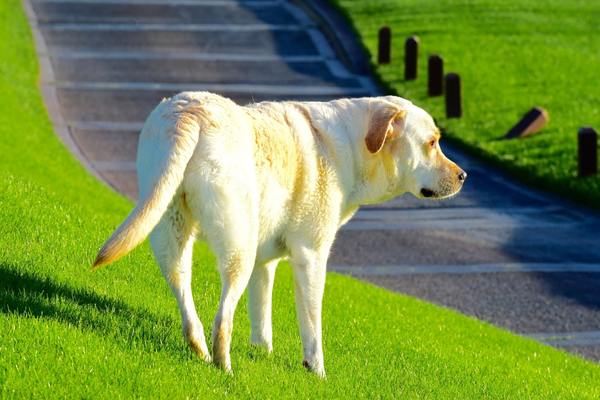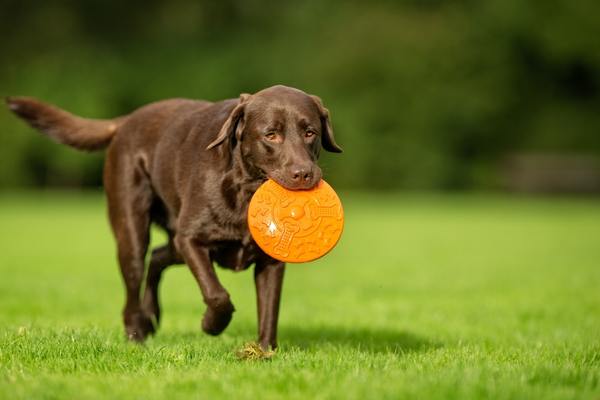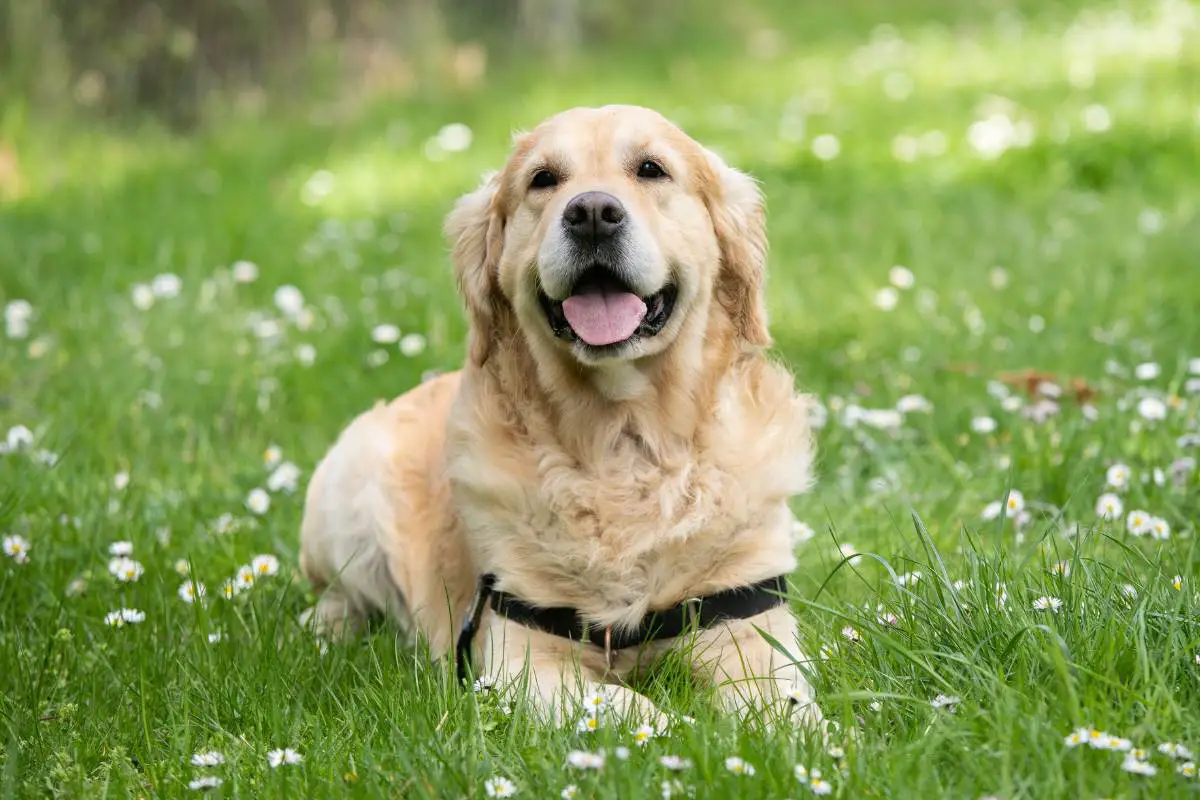Labrador Retrievers are one of the most popular dog breeds in America. In fact, they were ranked as the number one breed by the American Kennel Club in 2021. Not only do they make loyal companions, but they also have some unique characteristics that make them stand out from other breeds.
From their gentle yet energetic personalities to their intelligence and trainability, Labrador Retrievers are beloved by many pet owners across the country. In this blog post, we will explore some of the characteristics that make this amazing breed so special.
12 Characteristics of Labrador Retrievers
Appearance
1. Body shape

The Labrador Retriever is a medium-sized breed of dog with an iconic body shape. Their necks are thick yet muscular, gradually transitioning into the shoulder blades.
These shoulder blades are wide and strong, helping to give the breed a muscular and athletic look. The back is fairly straight, with well-developed loins going into a slight curve onto its broad hips.
The chest is deep (extends almost to the elbows) and wide, allowing for a lot of air intake and strong breathing capabilities. They have strong straight front legs and a broad chest that tapers to the waist.
Muscular rear legs with well-developed upper thighs provide additional strength and balance. This combination of features gives them an impressive presence that commands attention.
2. Head and Face
Labrador Retrievers have heads that are broad and round, while the back of their skull is wide and flat. They have a relatively narrow face with a black nose, dark eyes, and high-set ears that hang close to the head.
Their heads are marked with a broad, deep stop between the eyes and a moderate-length muzzle. All these features give the labrador a kind, expressive face that conveys its gentle and loving nature.
3. Coat and Color

Labs have a short, flat coat that is thick and double-layered. They can be black, yellow, or chocolate. The color of their coat is determined by genes from their parents and is a mix of two pigments: eumelanin which produces brown or black, and pheomelanin which produces yellow to red.
An additional gene also plays a role in the spectrum of yellow Labradors’ coats. The coat boasts a special sheen, feeling, and texture, unlike any other breed. Plus, it has remarkable water-resistant qualities and helps to keep them warm even during frigid temperatures.
4. Height and Weight
Labrador Retrievers are a strong, medium-sized breed of dog that has a somewhat rectangular body shape. Males typically weigh between 65 and 80 pounds, while females tend to be between 55 and 70 pounds. The height of a Labrador Retriever at the withers, which is the highest point of the shoulder blades, is usually 23 inches for males and 22 inches for females.
The ideal body proportion for Labradors is that they should be as long from their withers to the base of their tails as they are from the floor up to their withers. These balanced body proportions help to give them a sturdy, athletic appearance.
5. Mouth and Bite

Labradors have a strong bite for their size, with a PSI of 230. Despite this powerful bite, they are known to have soft mouths – meaning they can pick up and deliver objects such as birds without damaging them. This is because they were selectively bred over generations to not damage their prey while retrieving it.
While they may not have the strongest bite as compared to, say, a Mastiff which has a PSI of over 700 or a Pitbull with a PSI of 235, their bite is powerful enough to protect them and their owners from harm.
6. Tail

Their tails are thick and tapering, without any feathering seen on other retrievers like the Golden Retriever. They extend to a standard length of no longer than their hock, though some Labradors may have shorter or longer tails. These tails are covered in dense fur and follow the topline from the neck all the way to the tip, giving them a balanced look that is unmistakably Labrador!
Some Labradors’ tails may even curve up slightly, though they never curl over their backs as some other breeds do. Interestingly enough, the rounded appearance of this tail has given rise to its nickname: “otter tail.”
Labrador tails serve multiple purposes: they can act as powerful rudders while swimming, enabling them to navigate with great efficiency; they also communicate emotions and intentions through movement – wagging or tucking indicates happiness or anxiety, respectively. Lastly they can be used for balance when running or jumping.
Unfortunately, Labradors are prone to injuries involving their tails – limber tail syndrome being the most common. This condition causes the tail to hang lifelessly or jut out slightly before going limp. Fortunately, though, it is not very serious and can be easily remedied with medication.
Behavior
7. Temperament
Labrador Retrievers are known for being gentle, friendly, and outgoing. They love to be around people and tend to be very eager to please.
Labs have been used extensively as service dogs due to their intelligence, loyalty, and excellent work ethic. As such, they make great family pets and are good with children of all ages. They also get along well with other animals in the house if properly socialized from an early age.
Labradors have a strong instinct for retrieving and enjoy participating in activities that require agility or stamina, like flyball or field trials. Their natural playfulness makes them excellent candidates for sports such as dock diving or disc dog competitions. Additionally, Labradors can make wonderful therapy dogs as they thrive off being around people and perform well in obedience or agility trials.
8. Trainability

The American Kennel Club (AKC) recognizes Labradors as one of the world’s top ten most trainable dog breeds, partially due to the fact that they have strong memories and an eagerness to learn.
The Labrador Retriever has been described as having a personality that is eager to please, intelligent, loyal and outgoing. This makes them easy to train when they are given consistent instructions and positive reinforcement.
They respond well to reward-based training methods such as clicker training and treats. This type of obedience training can also help strengthen the bond between you and your Lab, making further training easier.
It’s important for owners of these dogs to start training early so that behavioral problems don’t develop over time due to a lack of structure or discipline. With appropriate socialization and consistent reinforcement, Labradors can be taught commands like sit, stay, come, down, heel and go potty on command. Additionally, Labradors are often used as service dogs because they can learn tasks quickly and reliably.
Because of their excellent trainability abilities, Labrador Retrievers can also be taught how to do agility courses or perform tricks like walking on their hind legs or jumping through hoops. They excel in these activities thanks to their high energy levels and intelligence which allows them to pick up new skills quickly with proper guidance from an owner.
Even though they may not always pay attention in class initially, they prove themselves capable after consistent practice with patience and love from you!
9. Barking
Labradors are not naturally known to be a particularly “barky” breed. While all dogs do vocalize, it is extremely rare for Labs to bark out of aggression due to their gentle and easily socialized temperaments. However, when bothered by fear or discomfort, Labradors may bark more than usual.
Night barking, even though uncommon for Labradors, can be triggered by various factors such as pain or illness, boredom, separation anxiety and even old age conditions such as dementia. To prevent this issue, it is important to rule out underlying health conditions and address any potential causes of boredom or separation anxiety. With the right training and reinforcement, Labrador Retriever barking can be minimized.
Health
10. Common Health Issues

- Obesity, which can lead to a number of other issues
- Hip Dysplasia, which causes malformation in the hip joint
- Osteochondritis Dissecans (OCD), a softening of the joints
- Eye Disease, including progressive retinal atrophy and glaucoma
- Epilepsy, which is characterized by seizures
- Allergies, which can be environmental or food-related
- Bloat, an often fatal condition where the stomach twists around itself
- Tumors, both benign and malignant
- Exercise-Induced Diseases, a disorder that causes collapse after too much exercise
- Heart disease.
11. Lifespan
The average lifespan of a Labrador Retriever is around 12 to 13 years. However, they can live up to 16 years or more with good care and nutrition. To ensure your Labrador enjoys a long, healthy life, it’s important to take them for regular check-ups and provide them with proper exercise and mental stimulation.
12. Litter Size
An average litter size for a Labrador is 6-8 puppies, although litters of up to 12 puppies have been reported. The gestation period for a Labrador is usually 63 days, and newborn puppies weigh between 8 and 24 ounces at birth. At six months, puppies typically weigh between 25-35 pounds and reach their full size by 12-18 months.

